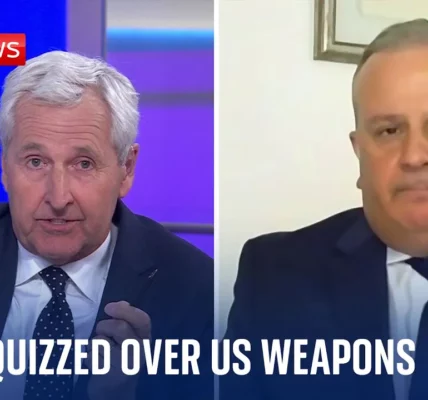The Jeremy Kyle Show Inquest: A Deep Dive into Reality TV and Mental Health

This article explores the implications of the unaired episode of the Jeremy Kyle Show, focusing on mental health issues, safeguarding measures in reality television, and the broader societal impacts surrounding the tragic case of Steve Diamond.
Introduction
The Jeremy Kyle Show, a staple of daytime television in the UK, has faced intense scrutiny following the tragic death of Steve Diamond, who took his own life just days after appearing on the show. This article delves into the details of the inquest, the criticisms leveled at the show’s format, and the vital conversation around safeguarding in reality television. By examining the circumstances surrounding Mr. Diamond’s death, we aim to shed light on the responsibilities of media producers towards their guests, especially those struggling with mental health issues.
Steve Diamond’s Story
Steve Diamond’s appearance on the Jeremy Kyle Show in May 2019 was intended to clear his name concerning allegations of infidelity. Despite his history of mental health struggles, he was determined to demonstrate his fidelity through a lie detector test. Unfortunately, he failed the test, which led to significant distress. Just seven days later, Mr. Diamond died from an overdose and heart complications.
The Aftermath of the Show
Following his death, the episode featuring Mr. Diamond was never aired, raising questions about the production’s ethical responsibilities. Clips shown during the inquest displayed the emotional turmoil he experienced during the taping, highlighting the potential risks associated with reality TV.
Jeremy Kyle’s Defense
During the inquest, Jeremy Kyle defended his presentation style as “direct but empathetic,” a claim that has been met with skepticism by viewers and critics alike. He insisted that the intention behind the show was to facilitate conflict resolution and provide aftercare for guests, a perspective that has sparked considerable debate regarding the adequacy of these measures.
The Inquest Proceedings
Findings and Reactions
The inquest into Mr. Diamond’s death not only focused on his personal struggles but also examined the show’s production practices. The coroner emphasized that the aim was not to assign blame but to understand the circumstances surrounding the tragedy.
Public Perception and Media Responsibility
The public reaction has been largely critical, with many questioning the ethics of reality TV formats that exploit personal crises for entertainment. The case has prompted discussions about the need for more robust safeguarding measures in the industry.
Safeguarding in Reality Television
The discussion surrounding safeguarding in reality TV has become increasingly urgent in light of recent tragedies. Critics argue that the industry must prioritize the mental health and well-being of its participants.
Current Safeguarding Practices
- Pre-screening participants to assess mental health status.
- Providing mental health support before, during, and after filming.
- Ensuring informed consent regarding the potential emotional impacts of participation.
Areas for Improvement
Experts suggest that while some progress has been made, more stringent guidelines are necessary to prevent further tragedies. This includes better training for production staff and more comprehensive aftercare packages.
Conclusion
The inquest into Steve Diamond’s death highlights the critical need for reform in reality television. As society continues to grapple with mental health issues, it is imperative for producers to take responsibility for the welfare of their guests. Moving forward, industry standards must evolve to ensure that entertainment does not come at the cost of individuals’ lives. We urge viewers and stakeholders alike to advocate for improved safeguarding measures in reality TV. For further reading on mental health and media responsibility, visit our related articles.
For those seeking support, please reach out to mental health resources available in your area. Together, we can create a safer, more empathetic media landscape.
“`




